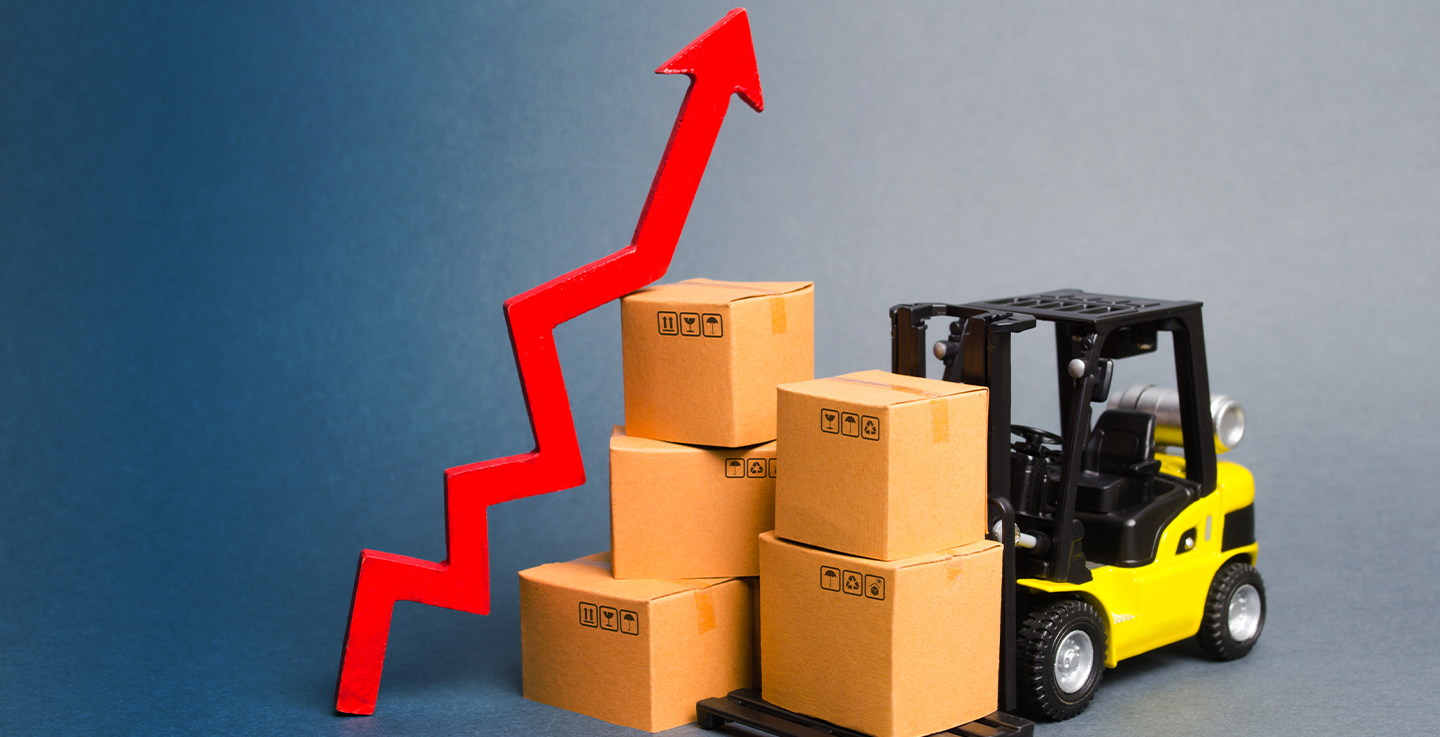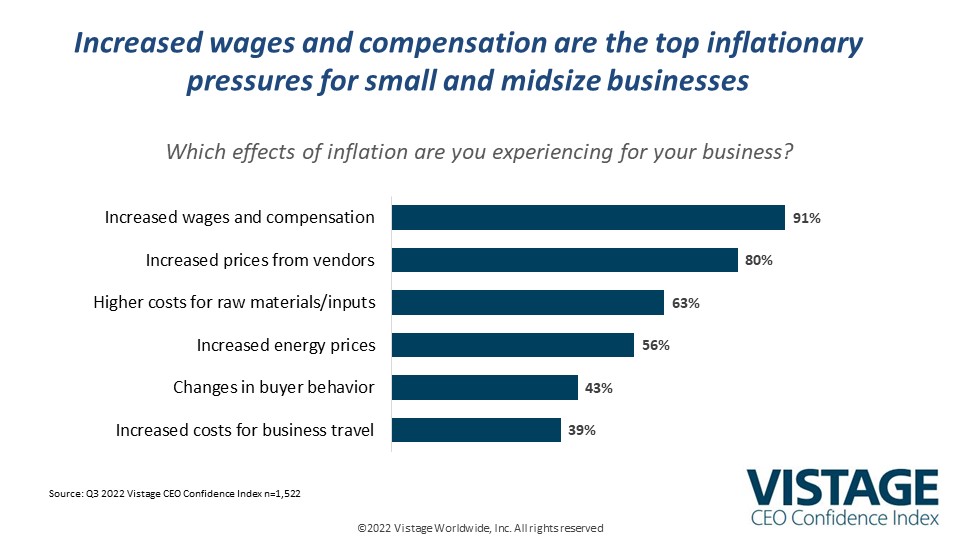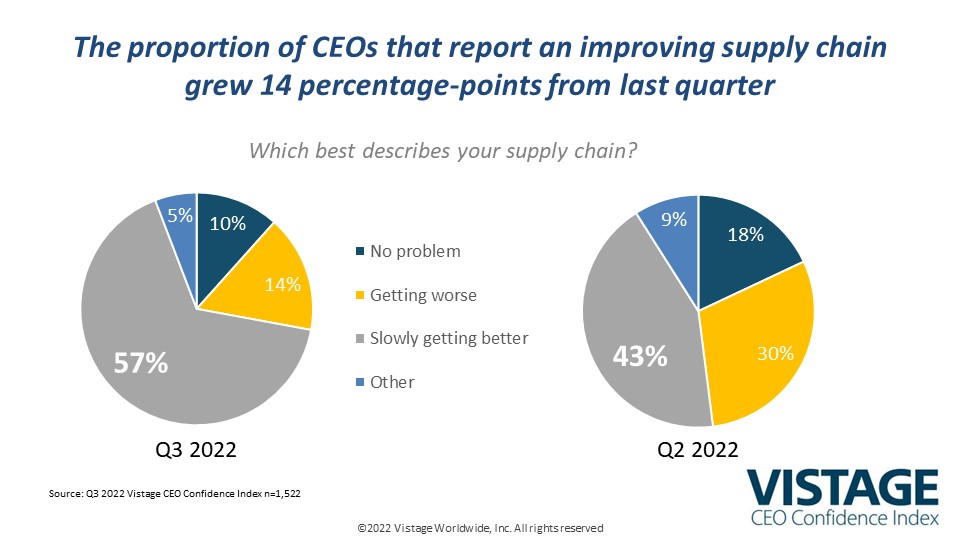Inflation moves past the crest

While the historically low water levels of the Mississippi are putting billions of dollars of grain exports at risk, we know this is part of a natural ebb and flow, and that the mighty Mississippi will recover to more normal levels over time. Inflation will crest — if it hasn’t already — and slowly decrease to normalize to a new baseline. As evidence, the inflation rate of 7.7% in October represents a decline from the peak of 9.1% reached in June. The reports remain optimistic on the continued lowering of inflation rates into 2023 — a disinflationary period — but it will be far from the norms of a pre-pandemic economy when the inflation rate was less than 2% and not a factor in managing the bottom line.
The Cares Act of 2020, which included the Paycheck Protection Program combined with the American Rescue Plan of 2021, injected $5 trillion into the wallets and accounts of Americans and businesses. In total, $14 trillion in government-funded stimulus surged into a global economy of $94 trillion, a spike of 15% that effectively added the funds to the equivalent of China’s economy. While that funding has mostly moved its way through the system, the residual inflation plagues everyone as the Eurozone experiences an inflation rate of 9.9%, the United Kingdom 10%, and our trading partners Canada and Mexico at 7% and 9%, respectively. Energy anxiety and the competition for talent continue to fuel inflation while an improving supply chain (57% say slowly improving) feeding increased inventory levels (30% higher than historical) and slowing demand are relieving some supply price pressures.
While nearly all (91%) CEOs report increasing wages to retain and attract talent, 56% of CEOs report increasing energy costs are impacting their business. 62% say hiring challenges are impacting their ability to operate at full capacity. Although hiring has slowed from a peak in Q4 2021, it continues to remain a top issue for CEOs.The pace of workforce expansion remains healthy with 53% of leaders increasing headcount in the year ahead and just 9% reporting plans to decrease personnel, which has not changed since last quarter. The bottom line is that hiring remains strong, and small and midsize businesses are increasing wages: More people at higher wages equate to more cost pressures.
CEOs are reticent to give back hard-won new employees or to lose highly valued existing workers; talent hoarding is taking the replacing layoffs. While big companies may go through selected rounds of layoffs, SMBs will be anxiously waiting to snare the top talent. As long as people are working and confident they will continue to be working, they are spending and we know consumers drive two-thirds of the economy. A recession without rising unemployment is just the slowing of growth.
Inflation’s implications
Inflation and supply chain complications are impacting every business. The top 3 concerns for CEOs are:
1. Hiring and retention remain the top business challenge.
CEOs are locked in an ongoing war for talent at a time when the labor market remains strong[a], giving every worker a chance to find a better job as part of the “Big Upgrade.”
Increasing demands to raise compensation, improve benefits and invest in employee/leadership development to attract and retain workers are major contributors to inflation.
91% of CEOs said increasing wages and compensation is their top inflationary pressure. While future hiring plans slowed slightly with 52% of CEOs planning to increase headcount in the year ahead, 53% report that they have already increased headcount since the start of the year and 30% are hiring above planned levels.
2. Increased costs are at record levels and are being passed down the line.
67% of CEOs report plans to raise prices in the next 12 months. Higher costs for raw materials and other inputs are a result of high demand and a slowly healing supply chain. Energy costs have fallen recently but have no limits on their bottom or top. Each factor feeds on the other in a death spiral of rising costs.

3. Changing customer behavior.
The pandemic brought major changes to buyers’ behaviors. Our research report, Marketing Matters, revealed that 78% of CEOs said that buying behavior had changed as a result of the pandemic. Buyers wanted a more digital experience and wanted to engage in a virtual selling cycle. Some buyers moved more quickly to stockpile essential components while others slowed down. Now, inflation has doubled down on behavior change. In our most recent survey, 43% of CEOs linked inflation to changes in buyer behavior as sales cycles slow down, projects get deferred and customers become more cautious in their buying and decision-making.
Supply chain in rehab
Supply chain issues continue to be a contributor to inflation for small and midsize businesses. The inability to get the components needed to meet demand both raises costs and slows down growth. Shutdowns have plagued the supply chain’s recovery, and the workforce shortage of key personnel in the supply chain like – longshoremen and truck drivers – further has further slowed recovery.
But data shows that the supply chain is healing. Most recently 57% of CEOs reported that their supply chain is slowly improving, a significant increase from the prior quarter. Slowing demand, higher-than-ideal inventories, and better efficiency have seen the number of container ships off the LA/Long Beach harbor waiting to unload go from 108 in January to just 9 last month while the cost of shipping a container has returned to pre-pandemic prices.

Pressure on pricing
Higher prices from vendors, higher prices for raw materials and goods, and increasing labor costs are all part of the inflationary spiral that feeds on itself. The rising cost of everything is forcing CEOs to increase their prices. Three-quarters (67%) of CEOs report plans to increase prices in the year ahead, down from 83% in Q1 and 76% in Q2, further indicating a crest.

Before the pandemic, CEOs focused on improving efficiency or increasing sales to drive revenue. Now, CEOs raise prices to just keep up, forgoing opportunities to be smart and conscious about pricing and resulting in fumbled messages to already exhausted customers.
To help small and midsize businesses maximize value without losing customers, Vistage speaker and President of Boost Profits Casey Brown shares her expertise on pricing strategies and tactics.
Demand is the answer
Econ 101 taught us the rules of supply and demand, and prices rise or fall based on that relationship. The stimulus-fueled consumer frenzy following the relaxing of COVID protocols far outstripped the available supply. Demand now becomes the answer as bank accounts normalize after the stimulus-induced gains and consumers become more cautious. Typically, as the economy slow and arecession approaches, unemployment grows, which further shrinks the consumer’s spending. That isn’t happening.
Underscoring the factors shared above — slowing demand, improving supply, higher interest rates, rising prices and higher wages — is the unstable cost of energy, which has gone down recently but could just as quickly go back up. The result is a state of concentrated volatility forcing CEOs to make critical decisions on a shifting landscape. However, the recently hard-learned lessons from the last several years should prepare CEOs to manage through the volatility, understanding that the current shift will eventually lead to the next one.
Related Resources
The CEO Pulse: Inflation Resource Center
Improvement in CEO confidence is ‘good-bad’ news [Q3 CEO Confidence Index]
Category: Economic / Future Trends
Tags: inflation, pricing strategies, supply chain

